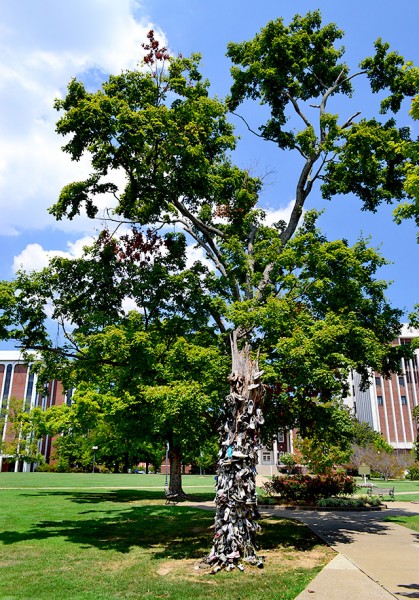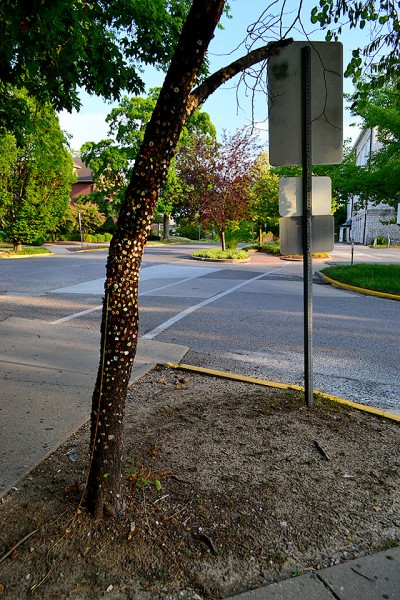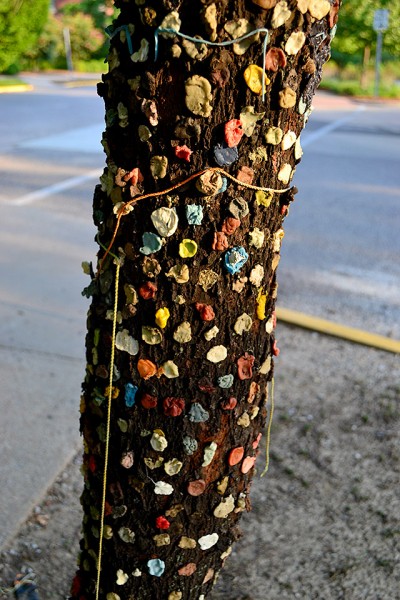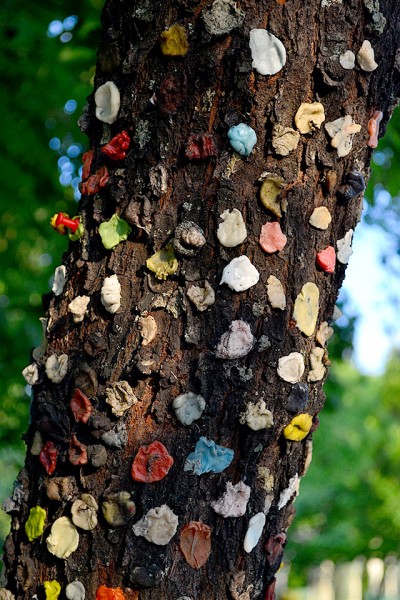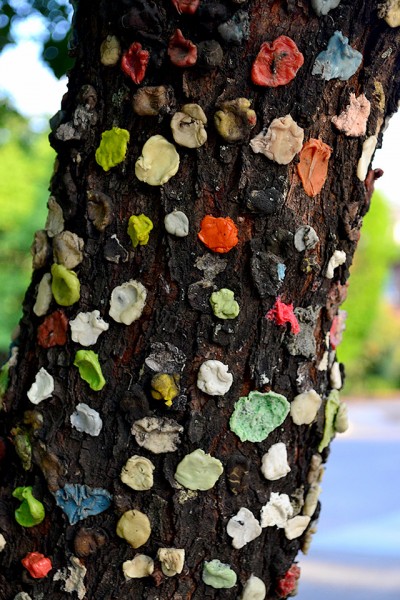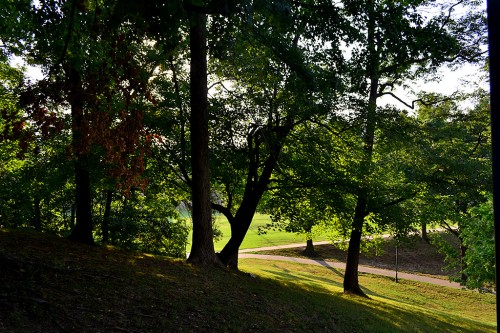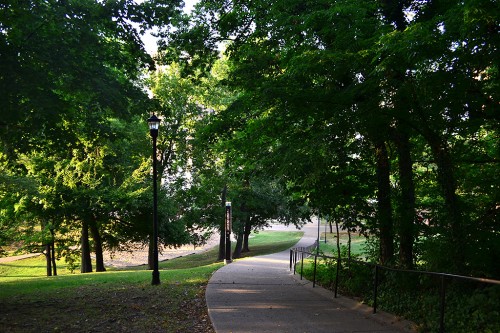Ever since I ran across the Perkins Shoe Tree (OK, it’s really a pole, but the pole was once a tree, so I’m going to say it still qualifies as a tree), I’ve been wondering how many other ones there are out there. When I spotted a newspaper clipping about the Murray State University Shoe Tree, I decided to make a detour on my way back home.
Located behind Pogue Library
I mentioned being a bit unnerved by the clown sign on the edge of town. I left my phone charger in Cape, so I had to stop at a Big Box store to get a new one. Neither did the young cashier nor an older woman at the door had ever heard of the Shoe Tree. Out in the parking lot, I did a little web research and found that the tree was supposed to be near Pogue Library. I put that in my GPS and headed out.
Unfortunately, when I got to the university, it seemed like every street I needed to turn down had temporary barricades on it. I went into a building that had all kinds of security monitors behind a desk, but there was nobody around to ask. The door that said I was supposed to show ID before entering was propped open. Trusting folks, those Kentuckians.
Skateboarders point the way
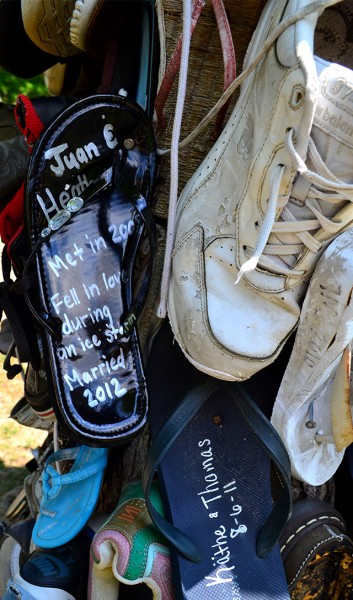 Out in the parking lot, I flagged down some teenage skateboarders who gave me vague directions. That got me close enough to ask some coeds in another parking lot who said they didn’t know the names of the streets, but I should take a right, another right before the McDonald’s, then curve around until I got to the library. They were right. Even found a parking spot in the shade.
Out in the parking lot, I flagged down some teenage skateboarders who gave me vague directions. That got me close enough to ask some coeds in another parking lot who said they didn’t know the names of the streets, but I should take a right, another right before the McDonald’s, then curve around until I got to the library. They were right. Even found a parking spot in the shade.
More like a snag than a tree
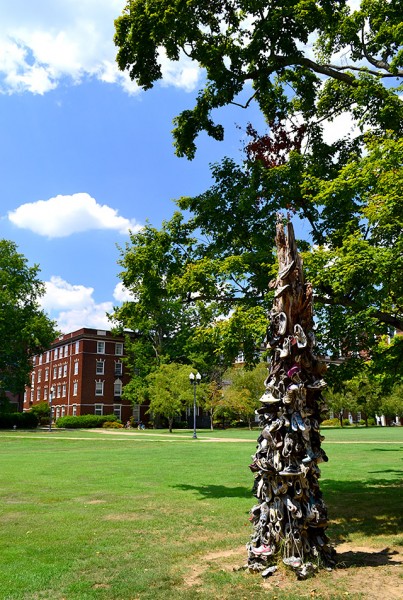 The legend is that if two students who met at Murray State University, fall in love and then marry, they will have good luck if each partner nails a shoe to the tree. Some folks have returned to tack a baby shoe to the tree when they’ve started a family. Nobody seems to know when the practice started.
The legend is that if two students who met at Murray State University, fall in love and then marry, they will have good luck if each partner nails a shoe to the tree. Some folks have returned to tack a baby shoe to the tree when they’ve started a family. Nobody seems to know when the practice started.
This isn’t the original tree. The first one, the story goes, was struck by lightning and burned. This one has had the branches lopped off and appears to be on its last legs (roots). Some accounts say that even this tree has been struck by lightning “due to a high zinc content from the nails.” I tend to discount that theory. There are lots of taller metal objects around that would provide more enticing targets for Thor.
Las Vegas? Chicago?
 Stefanie, the self-proclaimed List Queen, debated going to Las Vegas to celebrate her first wedding anniversary. Her hubby was pushing for an expensive Chicago restaurant.
Stefanie, the self-proclaimed List Queen, debated going to Las Vegas to celebrate her first wedding anniversary. Her hubby was pushing for an expensive Chicago restaurant.
“So what the heck are we doing? We’re going to nail our shoes to a shoe tree in Murray, KY (#185 on my list). What kind of redneck tradition is that, you may ask?”
How do you do it?
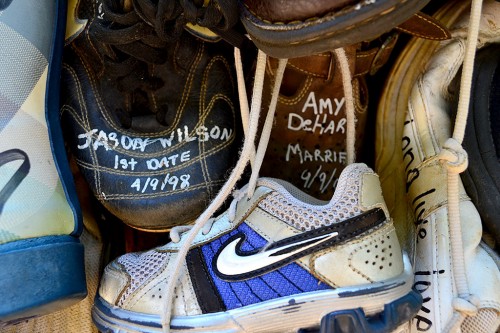 Stefani continues, “I thought there would be a whole process of verifying that we were students and that we actually did indeed meet at Murray. I thought we’d have to be escorted to the tree and someone would take our picture. But when Blake called, they were like, “Yeah, just show up and nail your shoes to the tree.” Awesome.”
Stefani continues, “I thought there would be a whole process of verifying that we were students and that we actually did indeed meet at Murray. I thought we’d have to be escorted to the tree and someone would take our picture. But when Blake called, they were like, “Yeah, just show up and nail your shoes to the tree.” Awesome.”
Southeast Missouri State University has its Gum Tree at the top of Cardiac Hill, so I guess it’s only right that Murray State would have a shoe tree.


